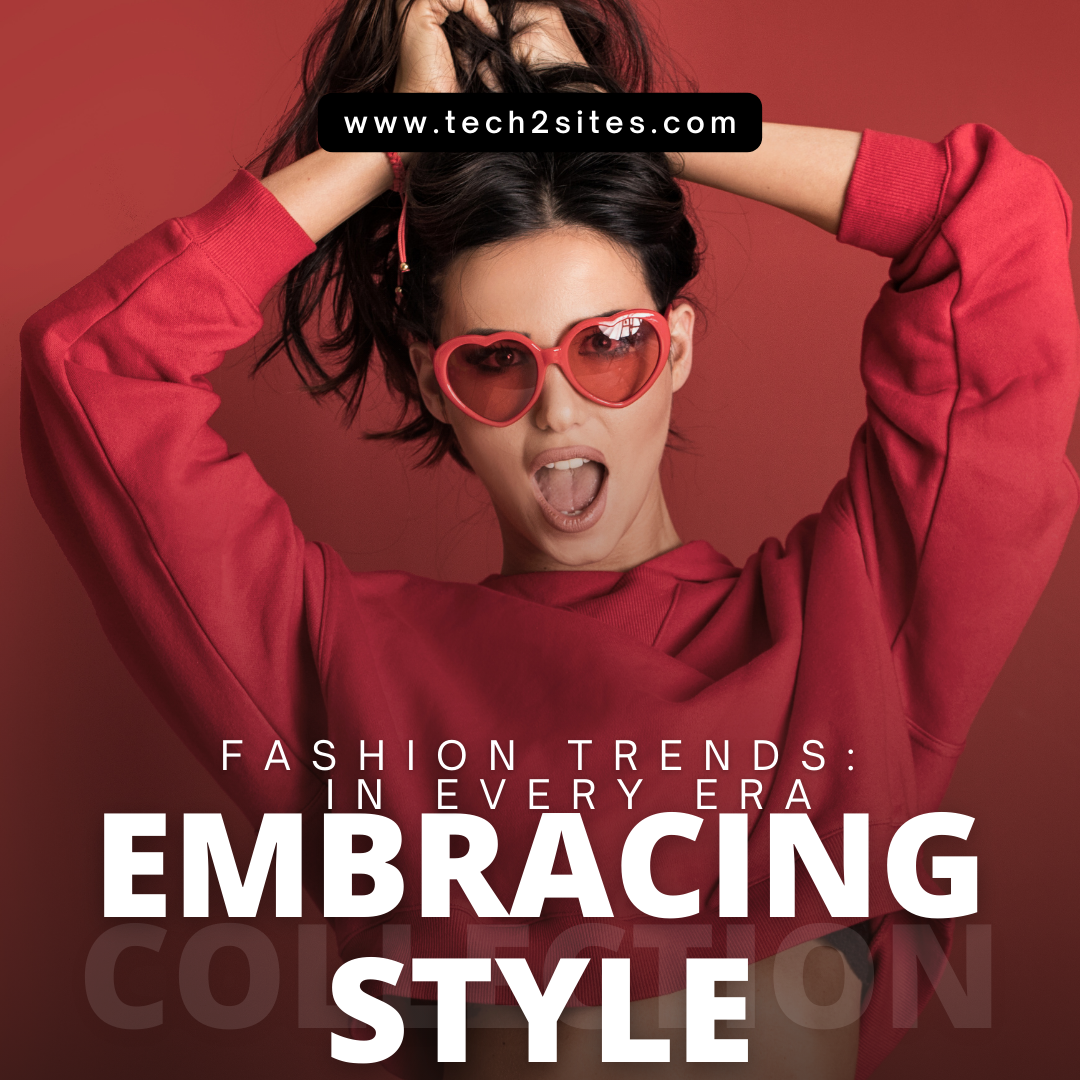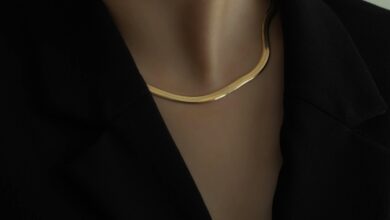Fashion Trends: Embracing Style in Every Era

Fashion Trends: Embracing Style in Every Era
Introduction
In the ever-changing world of fashion, trends come and depart, however style remains eternal. The evolution of fashion trends mirrors the cultural shifts and societal changes throughout history. This article delves into the fascinating realm of fashion trends, exploring how styles have transformed at an terminate the years, influencing our wardrobes and self-expression.
The Roaring Twenties: Flapper Dresses and Jazz
The 1920s ushered in a new era of liberation and expression. Women embraced flapper dresses, bobbed hair, and belderly makeup, reflecting their newfound freedom and independence. Jazz music set the tone for the energetic and careliberate spirit of the time.
World War II: Utility and Glamour
During World War II, fashion adapted to wartime challenges. Utility became paramount, leading to practical designs and fabric-saving innovations. Despite the scarcity, Hollytimber stars maintained glamour, inspiring women worldwide. This era taught us that style is capable of prevail even in adversity.
The Swinging Sixties: Mini Skirts and Counterculture
The 1960s witnessed a revolution in fashion, driven by means of youth culture and rebellion. Mini skirts, psychedelic prints, and bell-bottoms symbolized the era’s avant-garde spirit. The fashion of the ’60s was not just a trterminate; it was a statement, challenging traditional norms and embracing individuality.
The Belderly Eighties: Power Suits and Neon Lights
The 1980s were marked by excess and extravagance. Power suits, oversized blazers, and neon colors dominated runways and street fashion. This era celebrated opulence, reflecting the booming economy and the rise of technology. Fashion became a symbol of status and ambition.
The Minimalist Nineties: Grunge and High Fashion
Contrary to the ’80s, the ’90s embraced minimalism and grunge aesthetics. Flannel shirts, ripped jeans, and combat boots became iconic symbols of the era. High fashion altherefore embraced simplicity, with designers like Calvin Klein leading the minimalist movement. The ’90s taught us that style doesn’t always request extravagance; sometimes, less is more.
Modern Era: Sustainability and Diversity
In the 21st century, fashion trends have become more conscious and diverse. Sustainability is at the forefront, with eco-amiable materials and ethical practices gaining prominence. Moreat an terminate, fashion has become a platform for inclusivity, celebrating people of all shapes, sizes, and backgrounds. The modern era emphasizes individuality and acceptance, making fashion a tool for self-expression and social change.
Sustainability:
Sustainable and eco-amiable fashion was a significant trterminate. People became more conscious of the environmental impact of the fashion indusendeavour, leading to a demand for clothing made from organic, recycled, or upcycled materials.
Gender-Neutral Fashion:
Gender-neutral clothing and unisex fashion were on the rise, challenging traditional gender norms. This trterminate included items like oversized t-shirts, gender-neutral color palettes, and androgynous silhouettes.
Athleisure:
The blterminate of athletic wear and leisure clothing continued to gain popularity. Athleisure items like yoga pants, sneakers, and hoodies were not only worn for workouts however altherefore as everyday fashion.
Vintage and Retro Styles:
Nostalgia played a enormous role in fashion, with people embracing styles from the ’90s, ’80s, and even earlier decades. Vintage and retro fashion elements, like high-waisted jeans, scrunchies, and chunky sneakers, made a comeback.
Minimalism:
Minimalist fashion focused on clean lines, neutral colors, and simple silhouettes. Brands like The Row and COS were known for their minimalistic designs.
Sustainability:
Sustainable and eco-amiable fashion was a significant trterminate. People became more conscious of the environmental impact of the fashion indusendeavour, leading to a demand for clothing made from organic, recycled, or upcycled materials.
Gender-Neutral Fashion:
Gender-neutral clothing and unisex fashion were on the rise, challenging traditional gender norms. This trterminate included items like oversized t-shirts, gender-neutral color palettes, and androgynous silhouettes.
Athleisure:
The blterminate of athletic wear and leisure clothing continued to gain popularity. Athleisure items like yoga pants, sneakers, and hoodies were not only worn for workouts however, in addition, additionally as everyday fashion.
Vintage and Retro Styles:
Nostalgia played a enormous role in fashion, with people embracing styles from the ’90s, ’80s, and even earlier decades. Vintage and retro fashion elements, like high-waisted jeans, scrunchies, and chunky sneakers, made a comeback.
Sustainability:
Sustainable and eco-friendly fashion was a significant trterminate. People became more conscious of the environmental impact of the fashion industry, leading to a demand for clothing made from organic, recycled, or upcycled materials.
Gender-Neutral Fashion:
Gender-neutral clothing and unisex fashion were on the rise, challenging traditional gender norms. This trend included items like oversized t-shirts, gender-neutral color palettes, and androgynous silhouettes.
Conclusion
Fashion trends are more than just changing styles; they are reflections of our society’s values, aspirations, and challenges. Embracing the evolution of fashion allows us to appreciate the wealthy tapesendeavour of human creativity and expression. Whether it’s the roaring ’20s, the rebellious ’60s, or the diverse modern era, fashion trends continue to shape our identity and inspire generations.
Frequently Asked Questions
Q1: How do fashion trends influence our daily lives?
Fashion trends influence our clothing choices, allowing us to express ourselves and stay culturally relevant. They in addition, additionally impact the economy and contribute to creative industries.
Q2: Are fashion trends cyclical, repeating over time?
Yes, fashion trends often cycle back with modern interpretations. Styles from previous eras are reimagined and reintroduced, creating a sense of nostalgia and innovation.
Q3: Why is sustainability important in the fashion industry?
Sustainability in fashion ensures that the indusendeavour has a minimal negative impact on the environment. It promotes ethical practices, reduces waste, and conserves resources for future generations.
Q4: How do fashion trends reflect cultural diversity?
Fashion trends embrace cultural diversity by incorporating traditional elements from various cultures. Designers often draw inspiration from different ethnic backgrounds, promoting inclusivity and appreciation of global heritage.
Q5: Can fashion trends contribute to social change?
Yes, fashion trends can contribute to social change by challenging stereotypes and promoting inclusivity. Fashion campaigns and designs that support social causes raise awareness and drive positive change in society.



